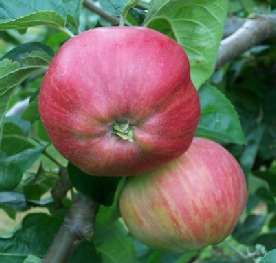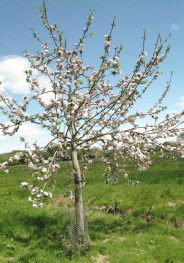

54. Tom Putt - Cider Apple

Season : Early. Flowers May, Harvest August/September
Pollination : Self Sterile, Triploid. Group C
Rootstock : M26 for a slightly smaller tree.
Notes :
Malus domestica 'Tom Putt'


Tom Putt Apple Trees produce large, rather flattened red, shiny apples with the odd green patch. They are usually well ribbed -
The fruit size is quite large for a cider variety, and they are easy to juice, making tangy rich flavoured juice that is ideal as the sharp element in a blended cider
Tom Putt apples are also superb cookers, the sharp flavour mellows on cooking and a light flavour and melting-
They keep well and may be stored until Christmas -
The tree is vigorous and disease resistant, begins cropping young and reliably bears large harvests.
Tom Putt apples used to be widely grown in the English West Country and Midlands for cider and cooking until the early 1900's.
The apple is associated with Combe House in Gittisham, Devon. the apple was supposed to have been named for an 18th-
However older growers in Somerset, according to Harold Taylor in The Apples of England, told a story that Putt was a rector, linking him with an early 19th century member of the same family, Rev. Thomas Putt of Trent.
It was also known as Ploughman, Coalbrook, Marrowbone, Thomas Jeffreys,Jeffreys Seedling and by many other local names.
A traditional old English variety of dual purpose apple, used as a cider apple or for cooking